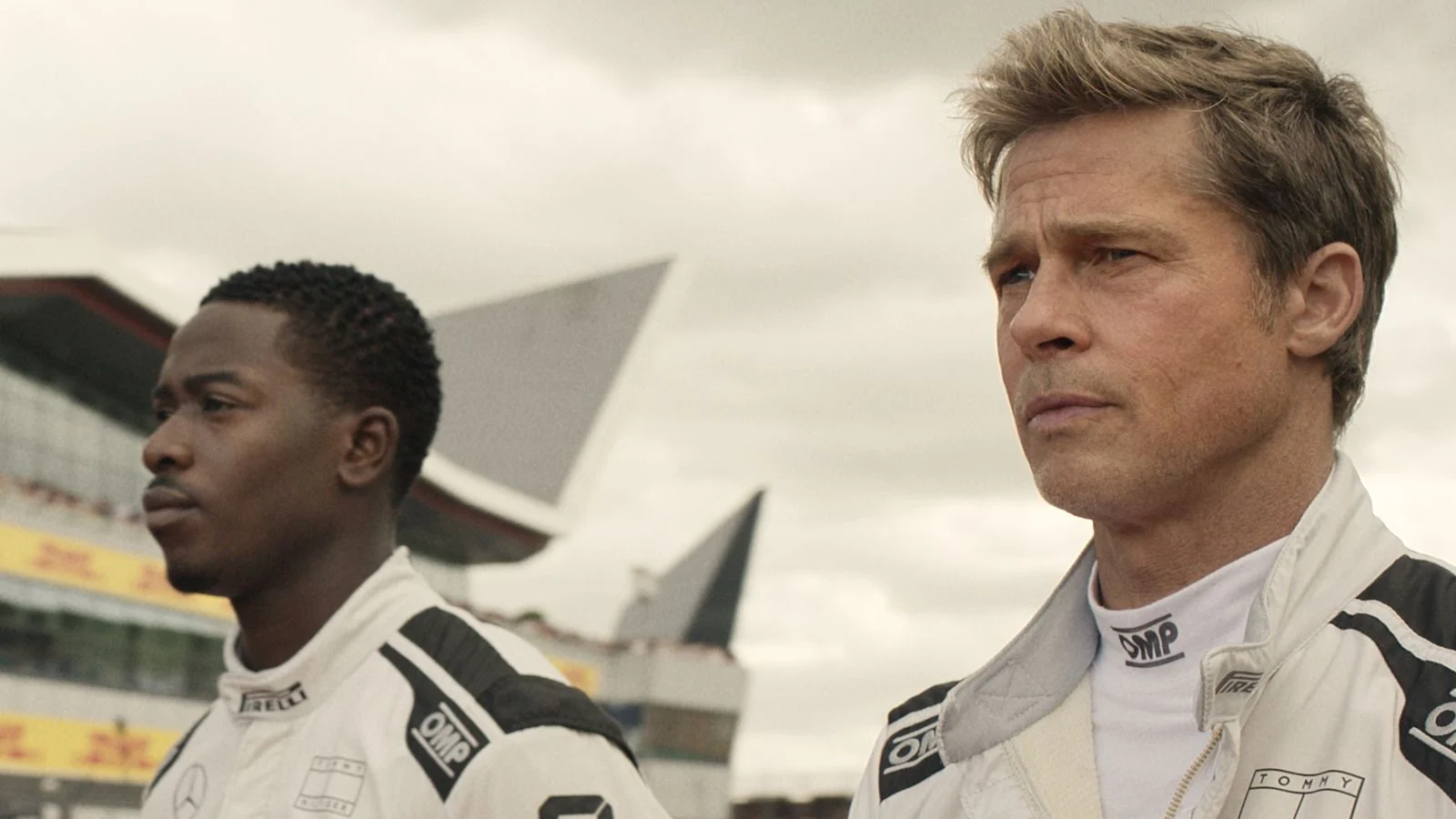The premise alone of F1: The Movie requires your disbelief to have better suspension than the cars. However, once you get your head around the idea of 61-year old Brad Pitt as a Formula One driver effortlessly out-racing guys less than half his age, it’s easy to settle into this film (produced by none other than Jerry Bruckheimer) which probably won’t be troubling the Oscars, but had at least the potential to provide some escapist fun by way of spectacular racing sequences. For the most part, the actual racing didn’t disappoint – which is more than can be said for the rest of the movie.
Pitt’s sexagenerian driver Sonny Hayes once had a glittering future ahead of him, brutally cut short by a crash at the Spanish Grand Prix back in the ’90s. Now living out of a van and drifting between minor races (which he invariably finishes in first place), he takes up the offer of a test drive from his old friend and teammate Ruben Cervantes (Javier Bardem), now the owner of underperforming F1 team APX GP, in the hope that he can reverse their fortunes. Unsurprisingly, Sonny also finds himself trying to mentor an up-and-coming APX driver, the “cocky” (read: insufferably arrogant) Joshua Pearce (Damson Idris). However, a rivalry soon develops between the two, plunging the team into further jeopardy.
Director Joseph Kosinski and maestro cinematographer Claudio Miranda are at least able to inject genuine adrenaline into the scenes on the track. F1 opens with a bang as Sonny cruises to victory at Daytona, soundtracked by Led Zeppelin’s “Whole Lotta Love”, and for most of the other races, the close POV shots through the windscreen maintain the thrills and tension. Unfortunately, the rest of the movie plods along through Ehren Kruger’s predictable screenplay. Most of the cast, including the usually solid Pitt and Bardem, seem to be going through the motions, with the possible exception of Kerry Condon as APX’s steely aerodynamicist Kate McKenna. None of the characters feel properly fleshed out, or venture beyond their roles as merely drivers (in some cases, literally) of the plot. Part of the problem is the shadow cast by the FIA, F1’s governing body, who collaborated in the making of the film. While this obviously allows for the use of their facilities and lends F1: The Movie a much greater degree of technical accuracy, it does reduce a dramatic work to a $200 million F1 branding exercise, rammed home by the endless cameos from F1 drivers and execs from Lewis Hamilton and Max Verstappen to Christian Horner. Because of this, the storyline has to remain positive throughout, and the stakes never feel genuinely high. As such, this movie doesn’t have much to offer to non-F1 fans. For more engaging twists and turns, you’d probably be better off watching actual F1.





